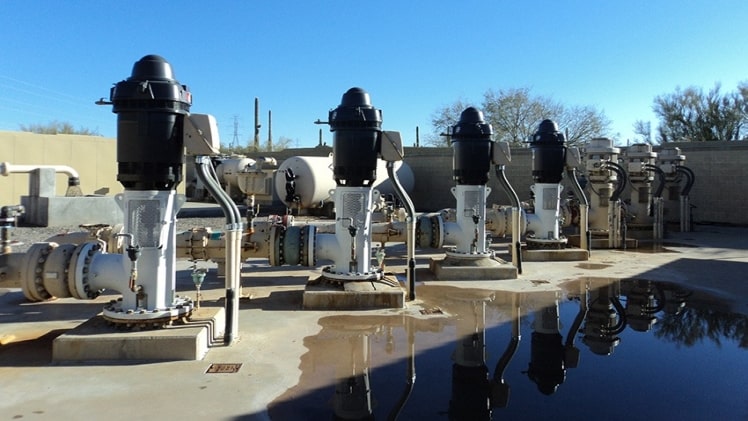This powerful well-pumping device was made with the help of modern technology. It is strong enough to work at depths of up to 150 meters below the surface.
Whether you’re using them in a business or at home, our turbine pumps provide a lot of power while using a lot less energy than other traditional ways of lifting water.
Overview of the Submersible Vertical Turbine Pump and its features
When it comes to pumping applications that require a reliable and efficient solution, a submersible vertical turbine pump is hard to beat. This kind of pump is made to work underwater, so it can be used in a wide range of places, like deep wells or reservoirs.What sets this pump apart is its ability to deliver high flow rates, handle high pressures, and operate with minimal noise and vibration.
The submersible vertical turbine pump is popular in many industries, such as water treatment, agriculture, and mining, because it is small and easy to maintain.There is no surprise that so many professionals around the world rely on this pump given its impressive features and capabilities.
Benefits of using a submersible vertical turbine pump for wells
When it comes to pumping water from a well, using a submersible vertical turbine pump can offer multiple benefits. These pumps are made to be put in the well, which helps to cut down on noise pollution and hide the pump.Additionally, submersible pumps are known for their energy efficiency, which can lead to cost savings in the long run. The vertical design of the pump also means that it can easily pump water from deep wells, making it a versatile option for a variety of applications.
Important safety precautions to take when installing a submersible vertical turbine pump
When it comes to installing a submersible vertical turbine pump, safety should always be your top priority. There are several precautions you need to take to ensure a safe installation process.
Firstly, make sure the pump is properly grounded to prevent electric shocks. Secondly, wear appropriate protective gear, such as gloves, goggles, and boots, to prevent injuries.
Additionally, always follow the manufacturer’s instructions carefully and double-check that all components are securely fastened together. Finally, only operate the pump when it is fully submerged in water to prevent any mechanical or electrical malfunctions.
Step-by-Step Guide to Setting Up a Submersible Vertical Turbine Pump in Your Well
Setting up a submersible vertical turbine pump in your well may seem overwhelming, but following a step-by-step guide can make the process more manageable.
- Determine the correct pump size and depth, ensuring it fits your well’s diameter and water capacity needs.
- Prepare the pump column and attach it to the pump motor. Afterward, neatly assemble the discharge head or base elbow before connecting them to the column.
- Once everything is in place, slowly lower the pump into the well, making sure the cable and motor are secured.
- Connect the power source and test the pump to ensure it’s running correctly.
With these steps, you’ll have a functioning submersible vertical turbine pump in your well in no time, giving you peace of mind and access to a reliable water source.
Tips for Maintaining and Troubleshooting a Submersible Vertical Turbine Pump in Your Well
If your home gets water from a submersible vertical turbine pump, you need to know how to keep it in good shape and fix problems with it. With a little bit of knowledge and effort, you can save yourself the money and hassle of having to replace the pump altogether.
Keeping the motor and electrical components of the pump clean and dry, inspecting the impeller and diffuser for wear or damage, and monitoring the water levels in your well are just a few of the tips that can help keep your pump running smoothly. And if you do encounter any issues, don’t panic! There are several common problems that you may be able to diagnose and fix on your own, such as a faulty motor, an airlock, or a clogged screen.
Comparison of Different Types of Electric Submersible Pumps for Wells
Electric submersible pumps are essential for pumping water from deep wells. Different types of these pumps are available on the market, each designed with unique features to meet specific needs. The centrifugal, screw, and hydraulic submersible pumps are the three most common types. The centrifugal pump is easy to install and operate, while the screw pump is ideal for viscous fluids.
On the other hand, hydraulic pumps work effectively in high-pressure and low-flow applications. The choice of pump depends on various factors, such as the depth of the well, the viscosity of the fluid, and the water yield. Understanding the strengths and weaknesses of each type of electric submersible pump can help ensure efficient performance and the longevity of the well.
After reading this blog post, you should know enough to get started on installing an electric submersible pump in your well in a safe way and making sure it works for a long time.

